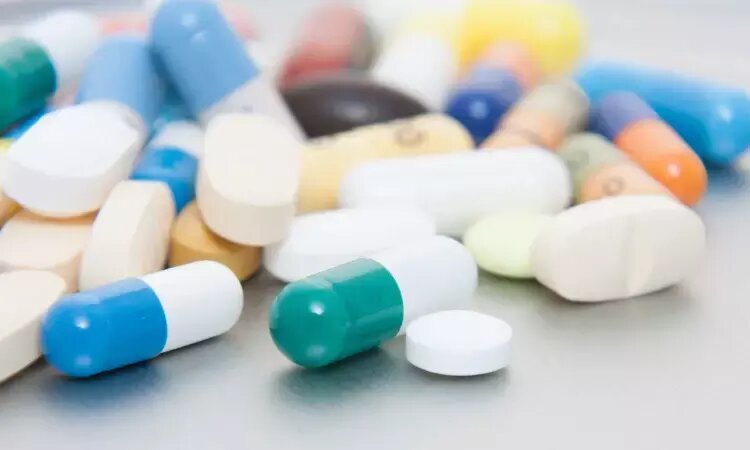Life-saving drugs are at the core of modern medicine, providing hope and treatment for millions of people worldwide. These medications have revolutionized healthcare, turning once-deadly diseases into manageable conditions and significantly increasing life expectancy. From antibiotics and vaccines to cancer treatments and emergency medications, life-saving drugs play a critical role in preserving and improving human health.
The Role of Life-Saving Drugs
Life-saving drugs help prevent, treat, and cure various diseases. They are essential for managing chronic illnesses, responding to medical emergencies, and preventing infections. Without these medications, healthcare systems would struggle to manage outbreaks, chronic conditions, and life-threatening diseases. The effectiveness of these drugs is often the result of decades of research, clinical trials, and innovations in pharmaceutical science.
Antibiotics: The First Line of Defense Against Infections
Antibiotics are among the most important life-saving drugs in history. Before their discovery, bacterial infections were often fatal. The introduction of penicillin in 1928 by Alexander Fleming marked the beginning of modern antibiotic therapy. Today, antibiotics like amoxicillin, azithromycin, and cephalexin help treat bacterial infections such as pneumonia, tuberculosis, and sepsis.
Despite their benefits, antibiotic resistance is a growing concern. Overuse and misuse of antibiotics have led to resistant bacterial strains, making some infections harder to treat. Efforts are underway to develop new antibiotics and promote responsible usage to combat this global health threat.
Vaccines: Preventing Deadly Diseases
Vaccines are a powerful tool in disease prevention. They work by stimulating the immune system to recognize and fight specific pathogens, providing immunity without causing illness. Vaccination has eradicated smallpox and significantly reduced the incidence of polio, measles, and other infectious diseases.
Life-saving vaccines include:
-
Polio Vaccine – Helped eliminate polio in many parts of the world.
-
MMR Vaccine (Measles, Mumps, Rubella) – Prevents three highly contagious diseases.
-
Hepatitis B Vaccine – Protects against hepatitis B, a leading cause of liver disease.
-
COVID-19 Vaccines – Played a crucial role in controlling the global pandemic.
Continued vaccination efforts are essential for preventing outbreaks and protecting vulnerable populations.
Cancer Treatment Drugs: Fighting a Silent Killer
Cancer remains one of the leading causes of death worldwide. Advances in oncology have led to the development of life-saving drugs that improve survival rates and quality of life for cancer patients.
Some key cancer treatment drugs include:
-
Etoposide – Used in chemotherapy for lung cancer, testicular cancer, and other malignancies.
-
Imatinib (Gleevec) – A targeted therapy for chronic myeloid leukemia (CML).
-
Trastuzumab (Herceptin) – Treats HER2-positive breast cancer.
-
Pembrolizumab (Keytruda) – An immunotherapy drug that helps the immune system fight cancer.
These drugs have transformed cancer treatment, allowing patients to live longer and healthier lives.
Emergency Medications: Saving Lives in Critical Situations
Certain drugs are essential in emergency medicine, helping to stabilize patients and prevent death in life-threatening situations. These include:
-
Epinephrine (Adrenaline) – Used for severe allergic reactions (anaphylaxis) and cardiac arrest.
-
Naloxone (Narcan) – Reverses opioid overdoses, saving lives in the ongoing opioid crisis.
-
Atropine – Treats bradycardia (slow heart rate) and certain types of poisoning.
-
Alteplase (tPA) – A clot-busting drug used for stroke and heart attack patients.
Having these medications readily available in hospitals, ambulances, and public spaces can make the difference between life and death.
Insulin: A Lifeline for Diabetics
Diabetes is a chronic condition that affects millions of people worldwide. Insulin, discovered in 1921, is a life-saving drug that allows people with diabetes to regulate their blood sugar levels.
Types of insulin include:
-
Rapid-acting insulin – Works quickly to lower blood sugar after meals.
-
Long-acting insulin – Provides a steady release of insulin throughout the day.
-
Mixed insulin – Combines both rapid- and long-acting effects.
Without insulin, people with type 1 diabetes would not survive, and those with type 2 diabetes would face severe complications.
Antiviral Drugs: Fighting Deadly Viruses
Viruses cause many serious diseases, from the flu to HIV/AIDS. Antiviral drugs help control viral infections by slowing virus replication and reducing symptoms.
Important antiviral drugs include:
-
Oseltamivir (Tamiflu) – Treats influenza and reduces the severity of symptoms.
-
Acyclovir (Zovirax) – Used for herpes and shingles infections.
-
Remdesivir – Helped treat severe COVID-19 cases.
-
Antiretroviral Therapy (ART) – A combination of drugs that manage HIV/AIDS, preventing disease progression and transmission.
The development of new antiviral drugs continues to be a priority in global health.
Cardiovascular Drugs: Keeping Hearts Beating
Heart disease is a leading cause of death, making cardiovascular drugs essential for millions of patients. These medications help manage conditions such as high blood pressure, heart failure, and stroke prevention.
Key cardiovascular drugs include:
-
Aspirin – Prevents blood clots and reduces heart attack and stroke risk.
-
Statins (Atorvastatin, Simvastatin) – Lower cholesterol and reduce heart disease risk.
-
Beta-blockers (Metoprolol, Propranolol) – Help control high blood pressure and heart rhythm disorders.
-
ACE Inhibitors (Lisinopril, Enalapril) – Lower blood pressure and protect the heart and kidneys.
These drugs play a crucial role in extending and improving the lives of people with heart conditions.
Anticoagulants and Antiplatelet Drugs: Preventing Blood Clots
Blood clotting is necessary to prevent excessive bleeding, but unwanted clots can lead to strokes, heart attacks, and deep vein thrombosis (DVT). Anticoagulant and antiplatelet drugs help prevent and treat these conditions.
-
Warfarin – A long-standing anticoagulant used to prevent blood clots.
-
Heparin – Used in hospitals for immediate anticoagulation.
-
Clopidogrel (Plavix) – Prevents clot formation in patients with heart disease.
-
Apixaban, Rivaroxaban (Eliquis, Xarelto) – Newer anticoagulants with fewer side effects.
These medications save lives by reducing the risk of life-threatening clot-related events.
Mental Health Medications: Improving Quality of Life
Mental health conditions can be just as life-threatening as physical diseases, leading to severe distress, disability, and even suicide. Life-saving psychiatric medications help manage conditions such as depression, anxiety, and schizophrenia.
-
Selective Serotonin Reuptake Inhibitors (SSRIs) (Fluoxetine, Sertraline) – Treat depression and anxiety disorders.
-
Antipsychotics (Clozapine, Risperidone) – Manage schizophrenia and severe bipolar disorder.
-
Mood Stabilizers (Lithium, Valproate) – Help prevent manic and depressive episodes in bipolar disorder.
Proper mental health treatment can save lives by preventing suicide and improving overall well-being.
Conclusion
Life-saving drugs are among the greatest achievements in medical science. They prevent deaths, improve health outcomes, and enhance the quality of life for millions of people. As pharmaceutical research advances, new and improved medications continue to emerge, offering hope for treating even the most challenging diseases. Ensuring access to these critical drugs worldwide is essential for a healthier and more equitable future.















Leave a Reply